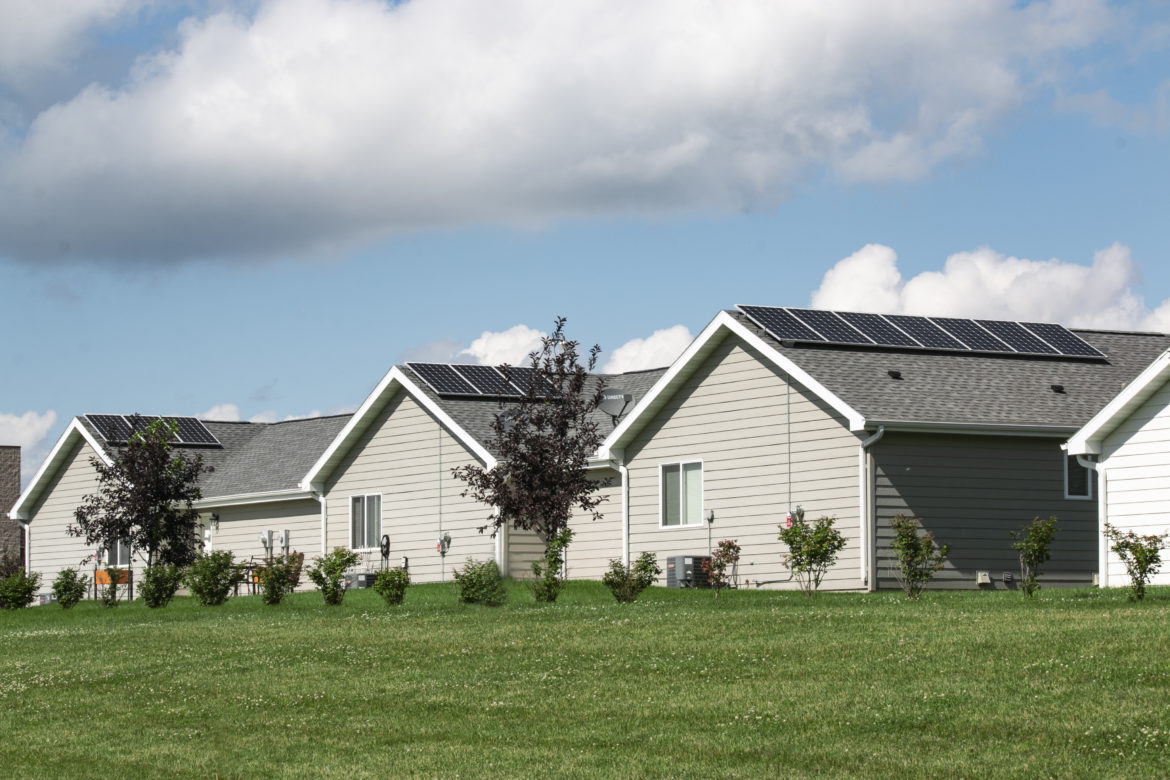The Winnebago Tribe of Nebraska already boasts 400 kilowatts of installed solar panels, more than nearly any other Midwestern Indian tribe.
It doesn’t plan to stop there.
The American Indian tribe expects to learn later this summer whether it will receive a federal grant to pay half the cost of an additional 300 kilowatts.
Tribal leaders in this community of about 850 people in northeastern Nebraska say the solar push, which started a decade ago, advances commitments to sustainability and self-sufficiency, and is cutting electric bills.
“Renewable energy is something we’re all about,” said Ann Marie Bledsoe-Downes, vice president for community impact and engagement of Ho Chunk Inc, the tribe’s economic-development entity. “My boss would say it’s just the right thing to do.”
The idea of the tribe producing its own energy started small in 2008 with a 25-kilowatt experiment. The concept resonated with members and the effort has grown rapidly in the last couple of years.
Indian tribes, like schools, churches and government entities, don’t have tax liability and therefore can’t directly benefit from federal renewable energy tax credits. In 2002, the U.S. Department of Energy began awarding competitive grants to tribes and has since distributed $78.5 million for 250 projects.
The vast majority has gone to tribes in the western U.S., but the largest beneficiary in the Midwest has been the Forest County Potawatomi in Wisconsin, which has installed 1.61 megawatts of solar generation. The Winnebagos received $425,000 from the grants, which they matched with funds from tribal sources.
The solar projects are paying off at monthly bill time. The tribe currently is saving roughly $47,000 annually on electricity, according to Robert Byrnes, whose company installed the tribe’s system.

Submitted / Winnebago Tribe of Nebraska
The Winnebago Tribe of Nebraska has installed more than 400 kilowatts of solar, including these on a senior housing facility.
Most of the panels have gone up in the town of Winnebago, where most of the tribe’s members reside. Panels have been installed on the roofs of the economic development office, powwow grounds, veterans’ building, senior center, and some senior housing. The tribe recently added a 60-kilowatt ground-mounted array on a field just outside of town that provides power for a used-car dealership and a convenience store.
Byrnes claims it’s “the most dense concentration” of solar panels in Nebraska, where utilities and state lawmakers have been .
Residential rooftop solar arrays have been rare. Bledsoe-Downes said that’s because residents don’t own their homes, for the most part. They live in apartments belonging to the tribe or, more often, the federal Department of Housing and Urban Development. Residential solar could gain momentum, though, as privately-owned housing develops in Winnebago.
“We are just now growing as a community with individual home ownership,” said Bledsoe-Downes. “That is a new thing for us.” Although there is a lot of interest in solar panels on top of private homes, she said that the population of Winnebago is growing, and, “We’re about getting people into houses now. We have a huge housing shortage.”
If the Winnebago’s pending application for $350,000 in solar grants is successful, it would likely use it to put another 300 kilowatts worth of panels on properties including tribal headquarters and the casino, Byrnes said.
After winning its first federal solar grant, the tribe instituted a monthly monitoring system. They inspect units at all 13 sites every month, take readings and address any errors and also make any needed repairs. Byrnes considers the monitoring program “one of the most important things we did. When we applied to the DOE for the big grant, they saw the continuing commitment and the monitoring program. Those were big points in our getting that award.”
While tribe members await word on a second DOE grant, they are hosting lots of curious visitors.
“We’ve had 100 tribes visit our community,” Bledsoe-Downes said. “We talk about many subjects with these leaders. We spend substantial time on our renewable-energy effort.
“Other tribes say, ‘Let’s do what Winnebago is doing.’ It resonates with people that we are taking control over our own resources.”
Source:
Related to SDG 7: Affordable and clean energy



